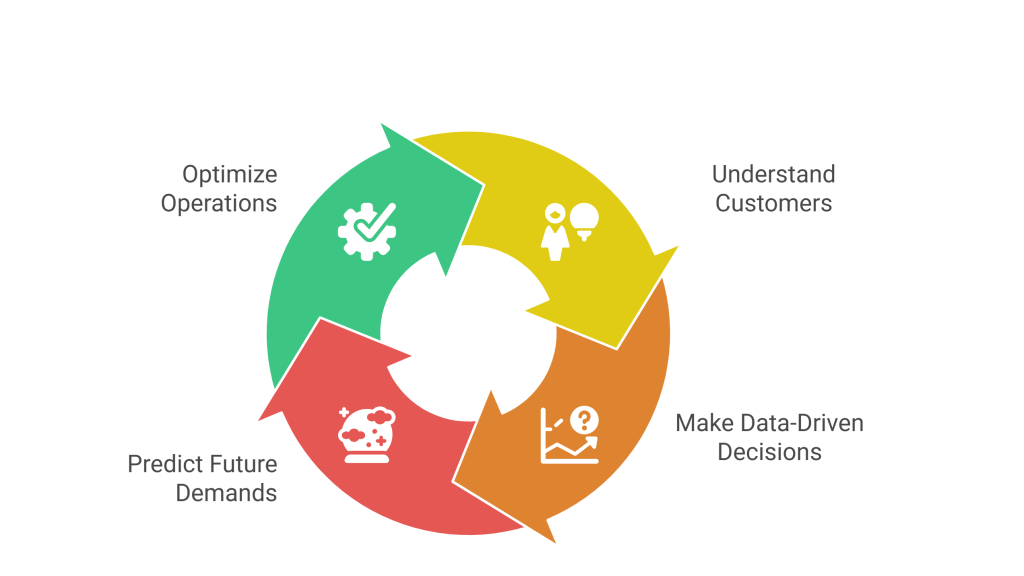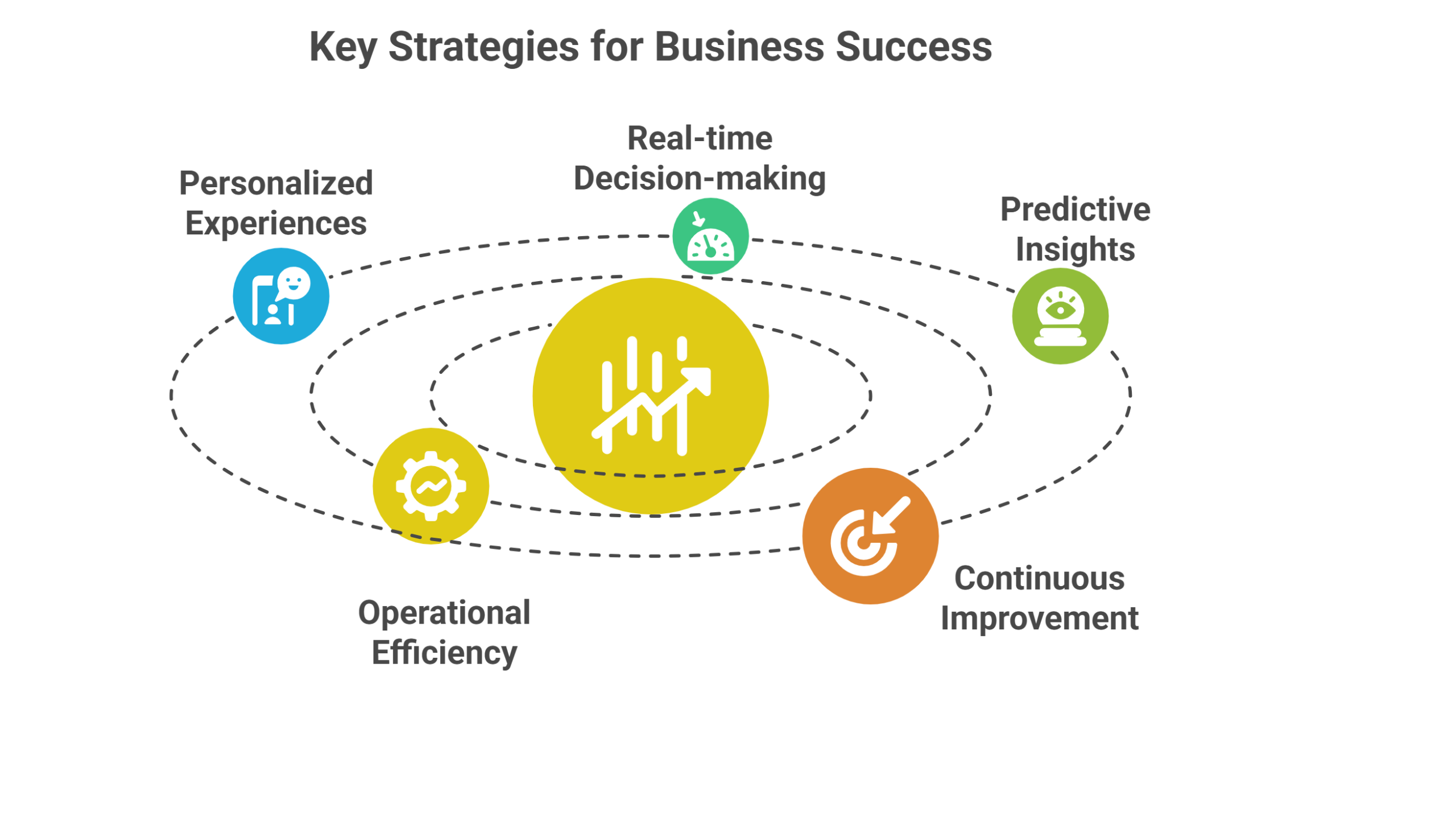
Big Data Analytics in Services has become the cornerstone of modern service delivery. In 2025, every service provider, from healthcare to e-commerce, must rely on data-driven insights to remain competitive.
Moreover, customers expect seamless and personalized experiences, and big data analytics in services allows companies to anticipate behaviors, improve operational efficiency, and enhance loyalty.
In this comprehensive guide, you will learn:
- Why big data analytics in services matters;
- How predictive insights and real-time analysis transform industries;
- A case study showing measurable results;
- FAQs that answer common questions.
Why Big Data Analytics in Services Matters in 2025
Service-based industries are dynamic and highly competitive. Unlike products, services are intangible, and customer satisfaction relies on experience, speed, and personalization.
Consequently, big data analytics in services has emerged as a critical growth driver, because it enables organizations to:

- Understand customers deeply;
- Make data-driven decisions instantly;
- Predict future demands and risks;
- Optimize internal operations efficiently.
As a result, companies that leverage analytics can react to market shifts faster and deliver services that delight customers.
Enhancing Personalization Through Big Data Analytics in Services
Personalization is now a customer expectation, not a luxury. Big Data Analytics in Services makes it possible to craft tailored experiences, which significantly increases loyalty.
For example:
- Healthcare providers analyze patient data to recommend personalized treatments;
- Streaming platforms suggest movies and shows based on viewing history;
- Hotels and travel services predict guest preferences for rooms, meals, and add-ons.
Consequently, customers feel valued and understood, which strengthens long-term engagement.
Improving Real-Time Decision-Making
In addition, services thrive on speed and accuracy. Big Data Analytics in Services provides real-time insights to enhance operational decision-making.
For instance:
- Banks detect fraudulent transactions and block them immediately;
- Ride-hailing apps reroute drivers based on live traffic and demand data;
- Food delivery services optimize routes to ensure faster deliveries.
As a result, customers receive prompt and reliable services, which boosts trust and satisfaction.
Predictive Analytics Gives Service Providers an Edge
Moreover, predictive analytics moves companies from reactive to proactive operations.
For instance:
- Hospitals forecast patient admissions to prevent overcrowding;
- Banks identify high-risk customers to reduce loan defaults;
- E-commerce firms anticipate seasonal spikes, enabling better inventory planning.
Consequently, big data analytics enables smarter resource allocation, ensuring sustained competitiveness.
Operational Efficiency
Services depend on flawless execution. Any delays or inefficiencies can damage brand reputation and profitability.
Big data analytics improves efficiency because:
- Logistics firms optimize fuel and delivery routes;
- Call centers schedule staff dynamically based on peak call hours;
- Hospitals minimize waiting times using patient flow data.
In addition, early detection of inefficiencies saves both time and money, providing customers with smoother experiences.
Customer Feedback Analysis for Continuous Improvement
Furthermore, customer feedback is a goldmine for service enhancement. Big data analytics in services collects and analyzes reviews, surveys, and social media mentions to:
- Identify recurring complaints;
- Highlight top-performing services;
- Guide innovation with data-driven insights.
As a result, organizations continuously evolve and deliver improved offerings, which keeps customers engaged.
Benefits of Big Data Analytics in Services

In summary, the major advantages include:
- Highly personalized experiences that boost retention;
- Real-time decision-making for superior service speed;
- Predictive insights for proactive problem-solving;
- Operational efficiency and cost reduction;
- Continuous improvement through feedback analysis.
Consequently, companies that adopt analytics today will dominate their markets tomorrow.
Case Study: How Big Data Analytics in Services Drove Transformation
A mid-sized financial service provider struggled with high customer churn, because competitors offered personalized solutions.
Challenge:
- Rising attrition;
- Limited behavioral insights;
- Lack of predictive tools.
Solution:
- Implemented Big Data Analytics in Services to track transaction trends and app interactions;
- Segmented clients by engagement level and risk factors;
- Delivered targeted offers to at-risk customers.
Results:
- Churn dropped by 35% in six months;
- App usage and engagement rose 40%;
- Revenue per customer increased 25%.
Therefore, this example proves that big data analytics in services can transform customer experience and business outcomes.
Conclusion
Big Data Analytics in Services is no longer optional—it is essential. By enabling personalization, predictive insights, operational excellence, and feedback-driven growth, analytics empowers service providers to thrive in 2025 and beyond.
Consequently, organizations that embrace analytics now will deliver unmatched experiences and secure long-term market leadership.
FAQs About Big Data Analytics in Services
1. Why is big data analytics important in services?
Because it improves personalization, efficiency, and decision-making, which directly impacts customer satisfaction.
2. Which service industries benefit most from big data analytics?
Industries like healthcare, finance, travel, logistics, and online retail see the most significant transformation.
3. How does it improve customer experiences?
By analyzing preferences, predicting behaviors, and offering tailored solutions, which creates loyalty and satisfaction.
4. Can small businesses use big data analytics in services?
Yes. Cloud-based and AI-powered tools make analytics affordable for small and mid-sized service providers.
5. What is the future of big data analytics in services?
The future will be AI-driven, real-time, and hyper-personalized, making services faster, smarter, and customer-centric.

